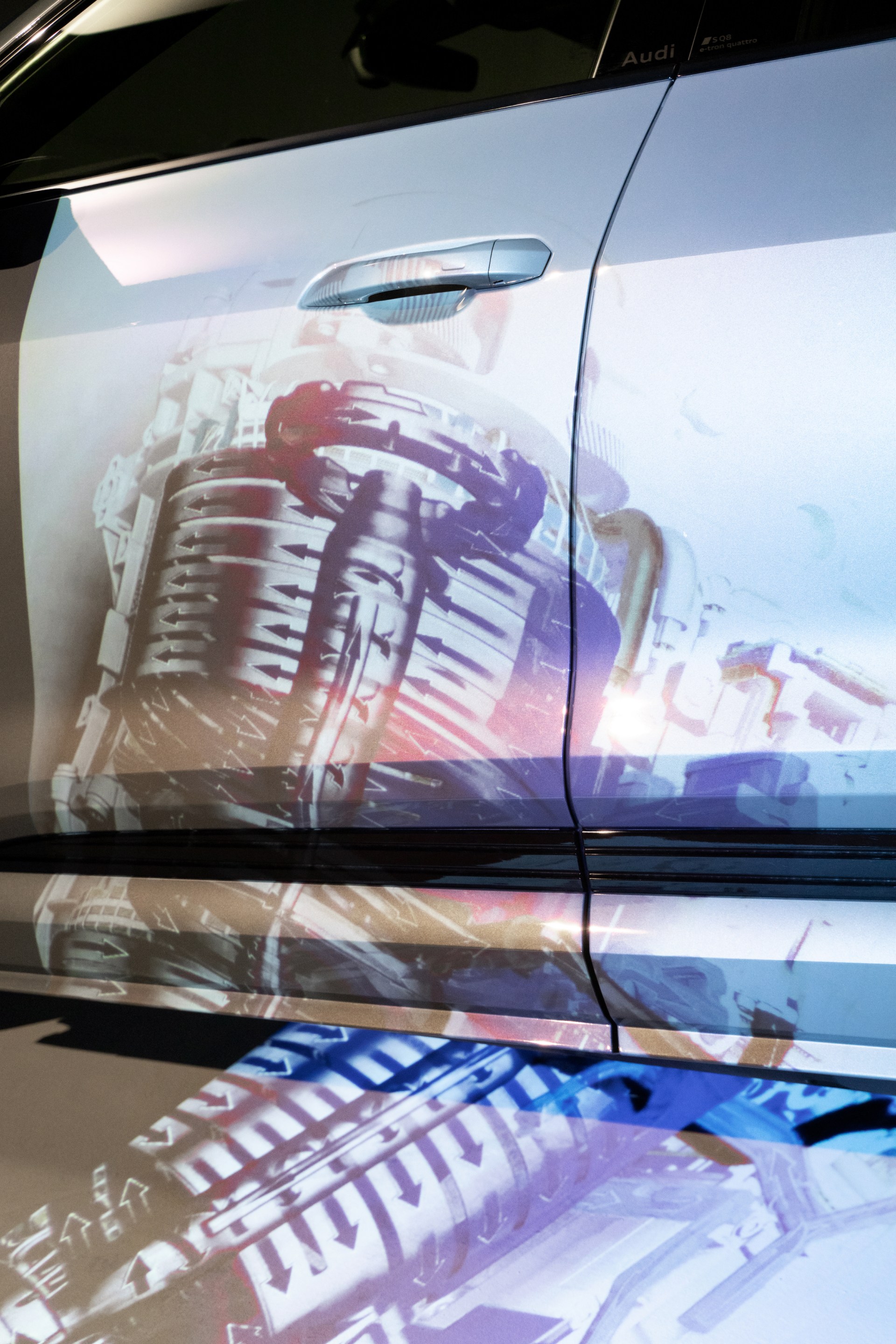A truly cool system
The feature Joachim Doerr finds most fascinating about the Audi SQ8 e-tron assures a high standard of e-performance.
Only consumption and emission values according to WLTP and not according to NEDC are available for the vehicle.

Joachim Doerr is thoroughly impressed with the Audi SQ8 e-tron*. But there is one feature that can be found in the entire Audi Q8 e-tron model* series which he finds most fascinating. It may not be visible to the naked eye, but the effectiveness of the thermal management is evident in the impressive driving and charging performance.
Joachim Doerr is thoroughly impressed with the Audi SQ8 e-tron*. But there is one feature that can be found in the entire Audi Q8 e-tron model* series which he finds most fascinating. It may not be visible to the naked eye, but the effectiveness of the thermal management is evident in the impressive driving and charging performance.
A few things that define the Audi SQ8 e-tron* are not visible at first glance. Let’s take the 114 kWh (gross) battery in the underbody, for instance. A design trick on the side sill between the front and rear axle may hint at where the energy storage unit is located. But other things are completely invisible. “What I find most fascinating about the Audi Q8 e-tron* is hidden deep inside the vehicle,” informs Joachim Doerr, opening the bonnet of the SUV. Even then, you can only guess what exactly the Audi engineer is talking about.
The Audi Q8 e-tron has become a fundamentally beautiful car, observes Joachim Doerr. “Especially in Chronos Gray*, it looks stunning.” The e-mobility enthusiast already enjoyed driving its predecessor, the Audi e-tron, and knows both generations of vehicles inside out – professionally and personally. “But if I were to highlight one thing, for me it would be the cooling system, the thermal management for the high-voltage system. Because that works swimmingly in the Audi Q8 e-tron.”
“Thermally speaking, the high-voltage system always stays in the comfort zone.”
Joachim Doerr

Joachim Doerr holds a doctorate in mechanical engineering and has been with Audi since 2001. Until 2014, his focus was on combustion vehicles; since then, he has been driving e-mobility at Audi.

At fast charging stations, the Audi SQ8 e-tron* can consistently charge at up to 170 kW.
Joachim Doerr holds a doctorate in mechanical engineering and has been with Audi since 2001. Until 2014, his focus was on combustion vehicles; since then, he has been driving e-mobility at Audi.
At fast charging stations, the Audi SQ8 e-tron* can consistently charge at up to 170 kW.
In addition to the battery, the high-voltage system of an e-vehicle also includes, among other things, the drive or, as in the case of the Audi Q8 e-tron*, the drives (plural!) and the charging technology. “The entire system,” Doerr explains, “has been meticulously refined, and it basically always stays in the comfort zone, thermally-speaking.” The interaction of control units, heat pump, and several heating and cooling circuits, however, is not really visible to the naked eye. But it can be experienced, because the state of the HV system has a direct impact on the performance of the all-electric SUV – on the road and at the charging station.
Joachim Doerr clearly knows his ropes: drives and motors define his career as an engineer. He has been dedicated to e-mobility since 2014, responsible, among other things, for the development of e-motors at Audi, working on the Audi e-tron, Audi’s first all-electric production vehicle and predecessor to the Audi Q8 e-tron. “At the beginning, there was little acceptance of electromobility among the general public due to frequent charging stops and slow charging speed,” he recalls. Effective battery temperature control, however, has a major impact on performance at the charging station. “Many electric vehicles, even current models, do charge very quickly at first, but then the charging performance soon decreases. But all models in the Audi Q8 e-tron series keep charging power high for a long time, especially in the important window of 10 to 80 percent.” Which, in other words, makes for shorter charging stops.

But it’s not just when it comes to recharging the battery that the complex thermal management comes into play, even when the energy is used for propulsion and acceleration. “Whether it’s a cold winter’s day or scorching hot in summer, from comfortable cruising to a sporty driving style – the drive system always operates in the optimum temperature range. You can unleash the vehicle’s full potential at virtually any time.”
For Joachim Doerr, the Audi SQ8 e-tron* is the ideal e-SUV for everyday use. Not only, but mainly, because of the standard technology package deep inside the vehicle.

Joachim Doerr is convinced of the benefits of electromobility, both personally and professionally.

What may sound theoretical has a big impact on the e-mobility experience in practice. The thermal management has a direct influence on range, driving and charging performance.
Joachim Doerr is convinced of the benefits of electromobility, both personally and professionally.
What may sound theoretical has a big impact on the e-mobility experience in practice. The thermal management has a direct influence on range, driving and charging performance.




